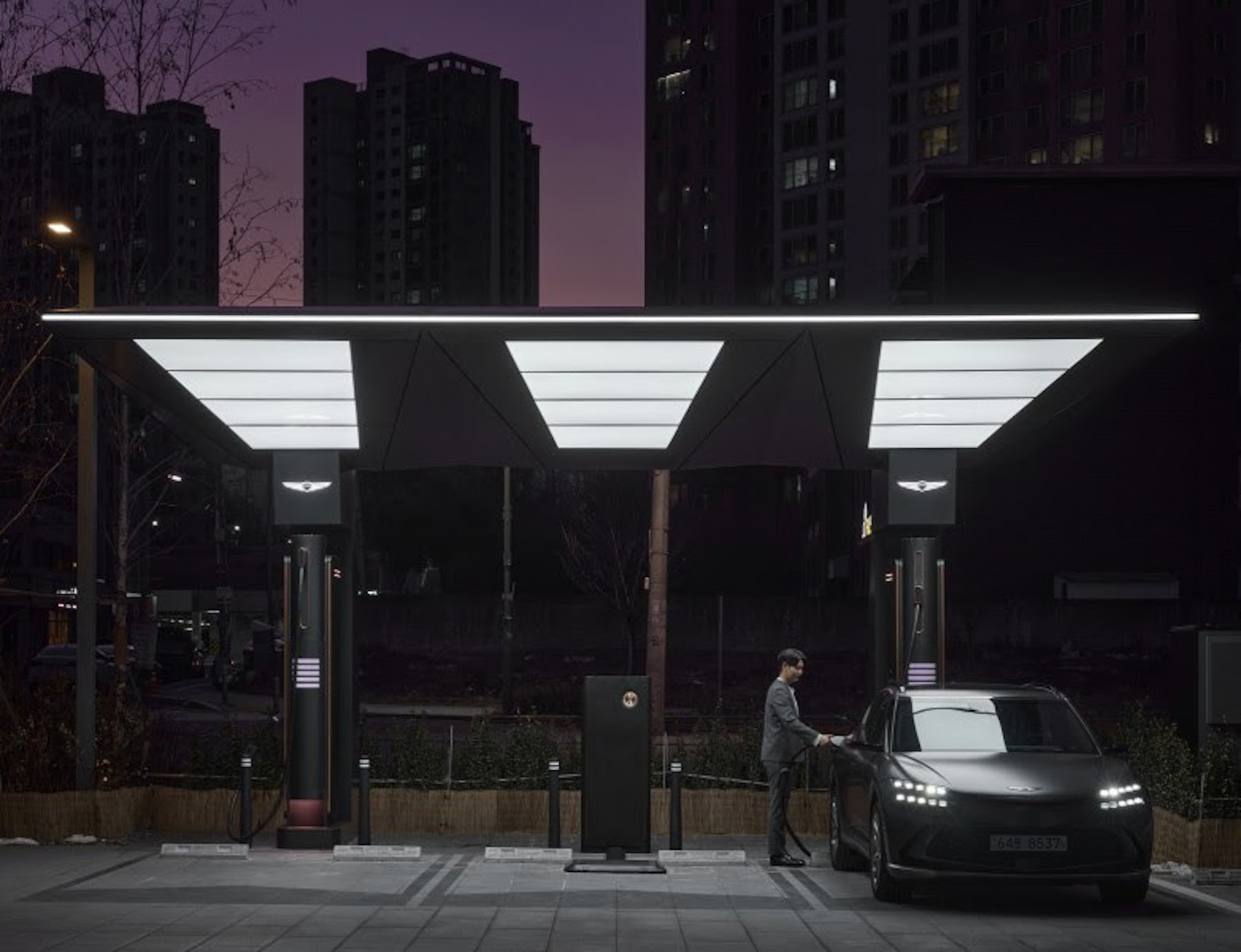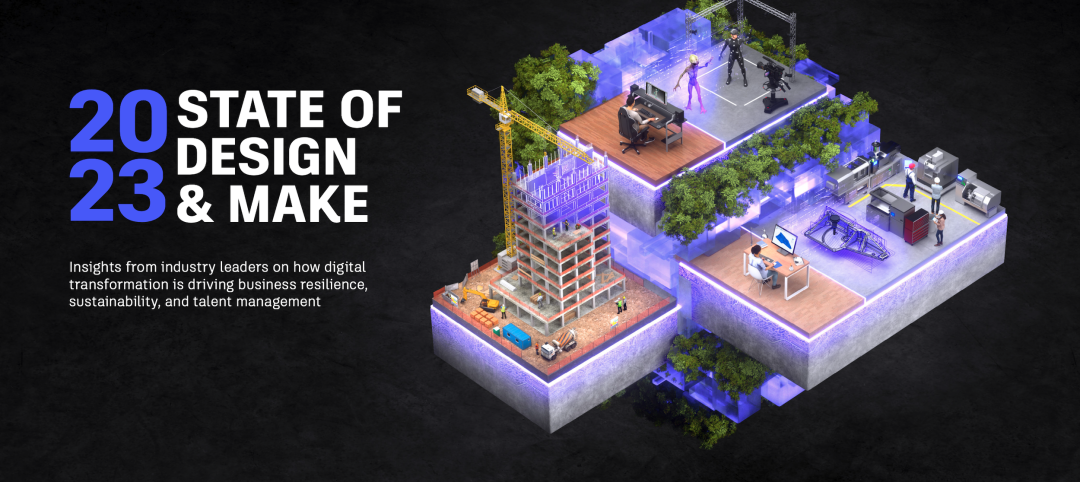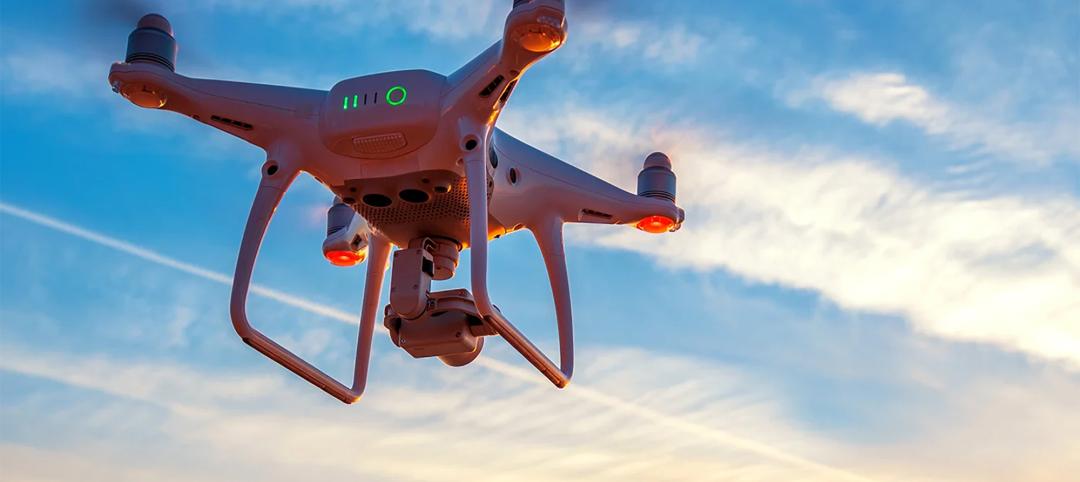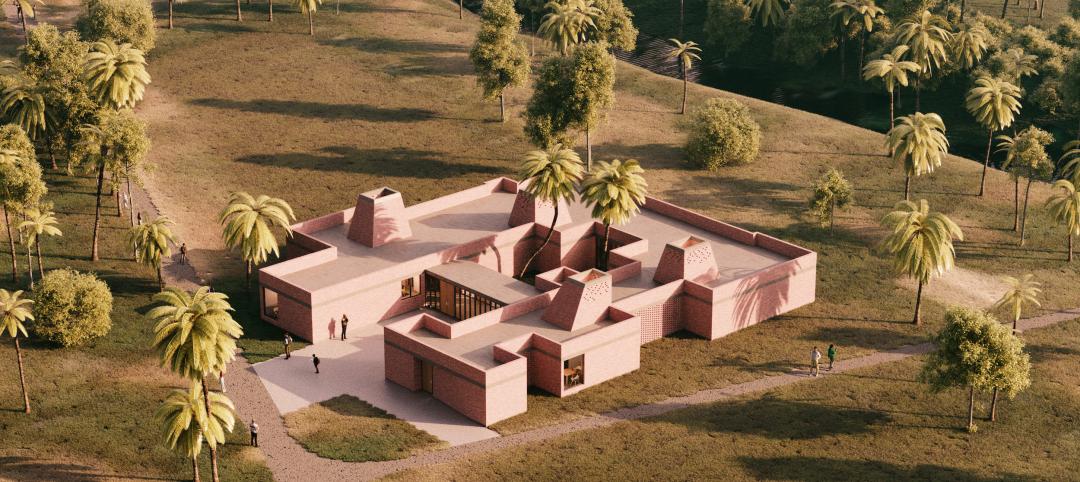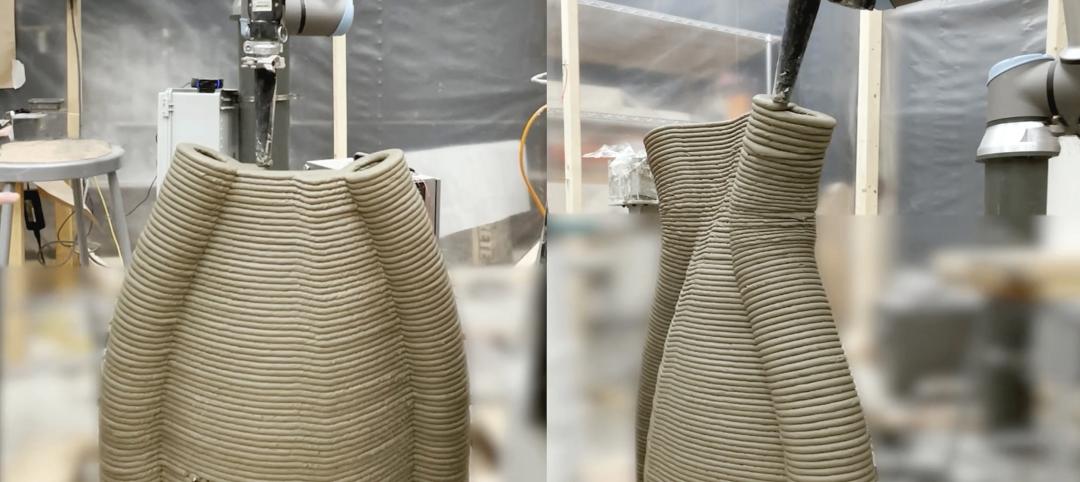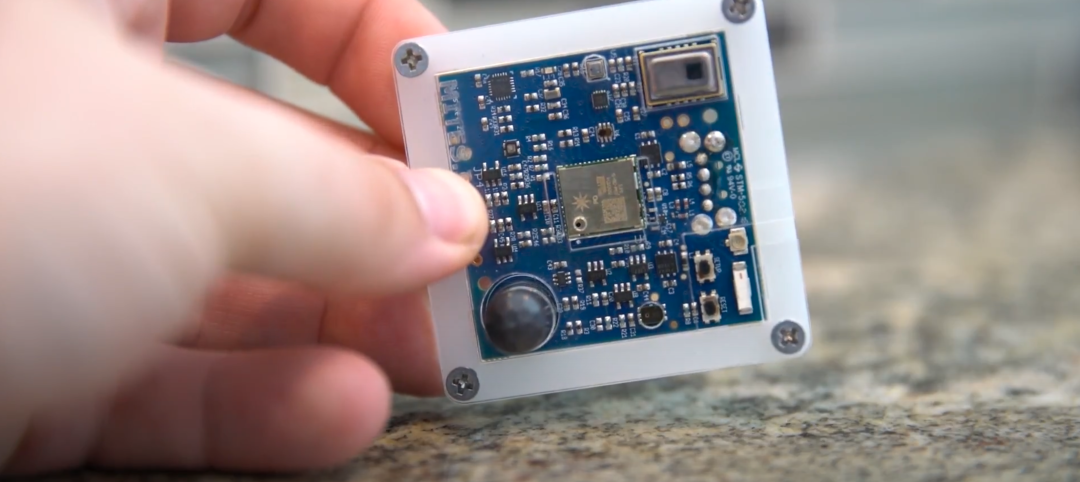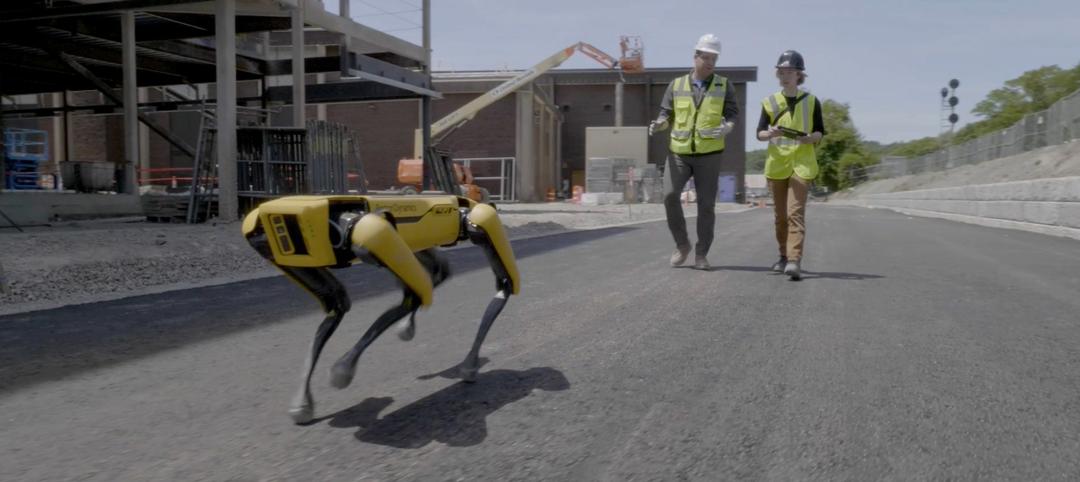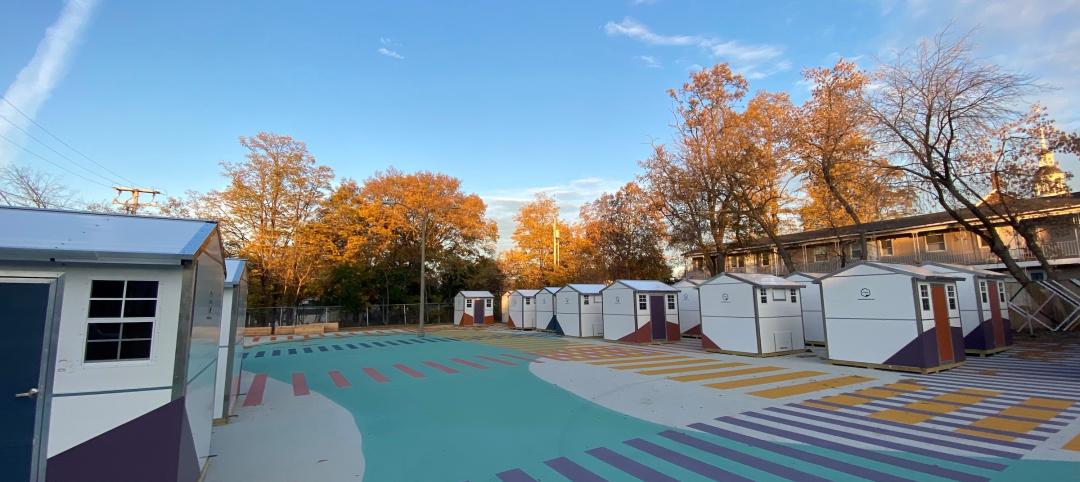With stations completed this month throughout South Korea’s most populated province, Gyeonggi-do, LA-based design and architecture firm Morphosis has partnered with automotive luxury brand Genesis to bring their signature brand and styling, attention-to-detail, and seamless customer experience to the design of Electric Vehicle Charging (EVC) Stations. The first phase of domestic deployment includes five sites throughout South Korea’s most populated metropolitan zones: Seoul and Gyeonggi-do, including stations in Genesis’ flagship showrooms, Suji and Gangnam, as well as other locations in Seoul and Goyang. The canopies are designed to be modularized and replicated in future expansions within Korea and beyond.
“From design concept to the smallest crafted detail, the defining design identity of the Genesis brand are materialized in the charging stations: the wing emblem, the two lines and the Athletic Elegance,” says Morphosis Design Partner Ung-Joo Scott Lee. “As leaders in both design and mobility, we are inspired to imagine new ways of thinking about the infrastructure needed for charging electric vehicles while providing Genesis new opportunities to connect and support its customers as we enter into the era of full vehicular electrification.”
Strategically Designed EVC Stations
The exterior EVC Stations are designed to serve as protective canopies made of aluminum panels on a steel superstructure. The winged form of the canopy is instantly recognizable within the urban environment, with a lightness and elegance that evokes the distinctive Genesis wing emblem and Genesis’ core design identity of “Athletic Elegance.”
The razor-thin canopy edge integrates a continuous LED light feature identifying the charging stations, with future capability of changing colors to indicate the electric vehicle charging level. The stations encompass a range of indoor and outdoor adaptations to respond to different climates and site conditions.
To address the unique existing conditions at each interior location, the design introduces a set of recognizable surfaces and forms identifying the EVC locations. The exterior canopies are designed in three different forms to accommodate different site parameters and requirements. “Double” and “triple” canopies accommodate additional chargers, allowing multiple vehicles to be charged at once. The new EVC stations are compatible with Genesis’ electric vehicles and the ultra-fast chargers can fully charge these vehicles in as little as 20 minutes.
Related Stories
Sustainability | May 1, 2023
Increased focus on sustainability is good for business and attracting employees
A recent study, 2023 State of Design & Make by software developer Autodesk, contains some interesting takeaways for the design and construction industry. Respondents to a survey of industry leaders from the architecture, engineering, construction, product design, manufacturing, and entertainment spheres strongly support the idea that improving their organization’s sustainability practices is good for business.
AEC Tech | May 1, 2023
Utilizing computer vision, AI technology for visual jobsite tasks
Burns & McDonnell breaks down three ways computer vision can effectively assist workers on the job site, from project progress to safety measures.
AEC Tech Innovation | Apr 27, 2023
Does your firm use ChatGPT?
Is your firm having success utilizing ChatGPT (or other AI chat tools) on your building projects or as part of your business operations? If so, we want to hear from you.
Design Innovation Report | Apr 19, 2023
HDR uses artificial intelligence tools to help design a vital health clinic in India
Architects from HDR worked pro bono with iKure, a technology-centric healthcare provider, to build a healthcare clinic in rural India.
Resiliency | Apr 18, 2023
AI-simulated hurricanes could aid in designing more resilient buildings
Researchers at the National Institute of Standards and Technology (NIST) have devised a new method of digitally simulating hurricanes in an effort to create more resilient buildings. A recent study asserts that the simulations can accurately represent the trajectory and wind speeds of a collection of actual storms.
3D Printing | Apr 11, 2023
University of Michigan’s DART Laboratory unveils Shell Wall—a concrete wall that’s lightweight and freeform 3D printed
The University of Michigan’s DART Laboratory has unveiled a new product called Shell Wall—which the organization describes as the first lightweight, freeform 3D printed and structurally reinforced concrete wall. The innovative product leverages DART Laboratory’s research and development on the use of 3D-printing technology to build structures that require less concrete.
Smart Buildings | Apr 7, 2023
Carnegie Mellon University's research on advanced building sensors provokes heated controversy
A research project to test next-generation building sensors at Carnegie Mellon University provoked intense debate over the privacy implications of widespread deployment of the devices in a new 90,000-sf building. The light-switch-size devices, capable of measuring 12 types of data including motion and sound, were mounted in more than 300 locations throughout the building.
Architects | Apr 6, 2023
New tool from Perkins&Will will make public health data more accessible to designers and architects
Called PRECEDE, the dashboard is an open-source tool developed by Perkins&Will that draws on federal data to identify and assess community health priorities within the U.S. by location. The firm was recently awarded a $30,000 ASID Foundation Grant to enhance the tool.
AEC Tech | Mar 14, 2023
Skanska tests robots to keep construction sites clean
What if we could increase consistency and efficiency with housekeeping by automating this process with a robot? Introducing: Spot.
Modular Building | Mar 3, 2023
Pallet Shelter is fighting homelessness, one person and modular pod at a time
Everett, Wash.-based Pallet Inc. helped the City of Burlington, Vt., turn a municipal parking lot into an emergency shelter community, complete with 30 modular “sleeping cabins” for the homeless.


